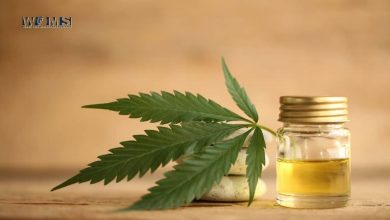Alternative Rehabilitation Tactics to Avoid Opioid Usage

Opioid usage in America has been rising at an alarming rate since their introduction as the god-send for pain management in the 1990s; and while opioids have helped to manage pain over that 20 year period, they’ve also proven to be highly addictive. In fact, most cases of opioid addictions are directly linked to the original prescription that is prescribed for valid reasons and used to manage the patient’s pain. An estimated 10.1 million Americans aged 12 or older misused prescription pain relievers in 2019 alone.
With such risks associated with repeated use, it’s best to seek an alternative form of pain relief and avoid opioid usage. Many people don’t consider alternative methods because they’re concerned about costs. However, according to the Barnes Firm, a team of slip and fall lawyers in NYC, there are many personal injuries that can lead to successful lawsuits, where you’ll be compensated for ongoing therapy and procedures you might need.
In many instances, the pain that leads people to be treated with opioids can be managed by other, more sustainable pain relief strategies. Below we discuss five alternative rehabilitation tactics to help you avoid opioid usage for your pain relief.
Physical Therapy
Physical therapy is an exercise-based treatment where patients can rehabilitate their muscles and increase mobility. Unlike other forms of pain management styles that offer instant relief, the relief from physical therapy will come over time and the results will last long term.
Physical therapy gets the body and muscles of the body back in sync, with the understanding that, for instance, a pinched nerve in your back could really be due to a sedentary lifestyle where you depend heavily on your right shoulder over your left.
By working with a therapist who knows your background and pain threshold, they’ll be able to provide a physical therapy routine that completely transforms the way your muscles respond to any activity and can help minimize your pain over time, with the goal of making your pain nonexistent.
Acupuncture
Acupuncture is an ancient art, being over 3,5000 years older than western medicine, and has been used in Asia for centuries to help relieve chronic pain. Traditional Chinese acupuncture consists of the insertion of fine needles along “acupoints” on the skin and allowing them to stay put for a period of time.
The theory behind the practice is that the needles will redirect the body’s natural chi. Illness or pain stems from the misdirection of the body’s chi, so by realigning it or releasing it, the body will be at peace.
Data backs the theory up, with western doctors seeing a notable difference in patients’ back and neck pain when going to an acupuncturist. Acupuncture is shown to relieve pain by releasing endorphins and encouraging the release of serotonin, the body’s own pain-killing, and mood-boosting chemicals.
Yoga
There have been numerous studies done on the benefits of adding yoga to one’s lifestyle, even if it’s just once a week. Yoga has been practiced for generations, it’s a mind-body exercise in breathing and stretching, which allows the muscles to grow stronger through repeated practice. Yoga has been proven to help with treating many chronic pain conditions, such as migraines, lower back pain, and arthritis. Yoga is also a mood-enhancer, with data showing that practicing helps improve overall mood and mental well-being.
CBD & Medical Marijuana
As the world’s understanding of pain management continues to evolve, so do the methods of treating pain. CBD and Medical Marijuana were for a long-time misunderstood allies of the pain management debacle, as the government deemed them controlled substances; but over the past 10 years, due to the data proving their pain-relieving effects and calls for social reform, CBD and medical marijuana have slowly become welcomed into American society.
CBD and Medical Marijuana produce very similar feelings and side effects, aside from the psychoactive nature of medical marijuana. When ingested the cannabinoids in CBD and medical marijuana attach to the receptors on the body’s endocannabinoid system. The endocannabinoid system plays a main role in managing the body’s pain relief, so the introduction of CBD or Medical Marijuana to the system helps reduce pain, inflammation, and anxiety.
Chiropractic Care
Chiropractors use various non-surgical treatments, such as spinal manipulation, to treat areas of your body that suffer from chronic pain. Your spine is part of your central nervous system, and your central nervous system controls most functions of the body and mind; meaning a healthy spine is essential for a healthy life.
When people think of chiropractic care they usually associate it with back-pain relief. While this is true, the pain relief you can feel from visiting a chiropractor stems further than just your spine. Chiropractors work with all parts of the body to help alleviate pain, for example, a recent study out of Duke suggested athletes with chronic pain in knees or shoulders benefit from chiropractic care. TMJ care is also a chiropractic specialty, which is the manipulation of the jaw through tools or massage. This helps alleviate jaw pain, constant headaches, and muscle stiffness.




